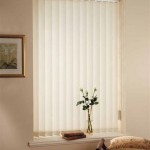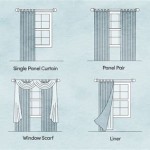How to Stop Shower Curtain From Blowing Inward
The persistent inward billowing of a shower curtain is a common bathroom annoyance. This phenomenon, often referred to as the "shower curtain effect," is caused by a complex interplay of fluid dynamics and pressure differentials. Understanding the underlying principles and implementing appropriate solutions can effectively mitigate this issue and enhance the shower experience.
Understanding the Causes of the Shower Curtain Effect
The primary driver of the shower curtain effect is the Bernoulli principle, which states that faster-moving air has lower pressure. Within a closed shower stall, the introduction of hot water creates several simultaneous effects. First, the hot water heats the air inside the stall, causing it to rise. This rising air then draws in surrounding air to replace it. Second, the shower spray itself creates a localized area of lower pressure as the water droplets move rapidly downward, pulling air along with them.
The combination of these factors creates a pressure differential: the air pressure inside the shower stall is lower than the air pressure outside. Consequently, the shower curtain, being a flexible barrier, is pushed inward toward the area of lower pressure. This inward movement is exacerbated by the temperature difference between the warm air inside the shower and the cooler air outside, which further contributes to the pressure imbalance. The shape of the shower enclosure also plays a role; smaller, enclosed spaces tend to worsen the effect because the pressure differential is more concentrated.
Furthermore, the shower curtain material itself can influence the extent of the problem. Lighter, thinner curtains are more susceptible to the pressure difference than heavier, thicker ones. The permeability of the curtain material can also be a factor, albeit a minor one, as some curtains may allow a small amount of air to pass through, slightly reducing the pressure imbalance. However, most shower curtains are designed to be water-resistant, making this effect minimal.
Practical Solutions: Weighting and Securing the Curtain
One of the simplest and most effective solutions is to add weight to the bottom of the shower curtain. This can be achieved in several ways. One common method is to attach dedicated shower curtain weights, which are small, weighted objects that clip onto the bottom edge of the curtain. These weights add mass, making the curtain less susceptible to the pressure differential and reducing its tendency to billow inward.
Alternatively, DIY solutions can be employed using readily available materials. Metal washers, small pebbles sealed in fabric pouches, or even chains can be attached to the bottom of the curtain to increase its weight. The key is to distribute the weight evenly along the bottom edge to prevent localized sagging or uneven billowing. Care should be taken to ensure that any added weights are waterproof and rust-resistant to avoid staining or damage to the curtain and shower enclosure.
Another approach is to physically secure the curtain to the shower stall walls. This can be done using suction cups or adhesive hooks. These devices attach to the shower walls and hold the curtain in place, preventing it from being drawn inward by the pressure difference. Strategic placement of these securing devices along the sides of the curtain can effectively inhibit inward movement.
Magnetic shower curtains offer a pre-built solution that solves this problem. These curtains incorporate magnets along their bottom edge that adhere to the metal of a bathtub or shower base. This magnetic attachment provides a secure hold that prevents the curtain from billowing inward. For fiberglass or acrylic showers, adhesive metal strips can be applied to provide a surface for the magnets to adhere to. The strength and placement of the magnets are crucial for optimal performance. Sufficiently strong magnets, spaced closely together, are necessary to counteract the pressure differential.
Adjusting Environmental Factors: Ventilation and Shower Technique
Improving the ventilation within the bathroom can significantly reduce the shower curtain effect. A properly functioning exhaust fan helps to remove the warm, humid air from the shower stall, thereby reducing the pressure differential that causes the curtain to billow inward. Running the exhaust fan during and after showering helps to maintain a more balanced air pressure and temperature.
Ensuring that the exhaust fan is appropriately sized for the bathroom is also important. A fan that is too small may not be able to adequately remove the warm air, while a fan that is too powerful can create excessive drafts. The fan's CFM (cubic feet per minute) rating should be sufficient to exchange the air in the bathroom multiple times per hour. Regular cleaning of the exhaust fan grilles is also necessary to maintain optimal airflow and prevent dust buildup.
Adjusting the shower technique can also contribute to a reduction in the shower curtain effect. Directing the shower spray away from the curtain can minimize the localized area of lower pressure that pulls the curtain inward. Aiming the spray downwards and towards the center of the shower stall can help to maintain a more stable air pressure and reduce the tendency for the curtain to billow. This requires a conscious effort to control the direction of the shower spray, but it can be an effective way to minimize the problem without requiring additional hardware or modifications.
Furthermore, slightly reducing the water temperature can lessen the pressure imbalance. While a hot shower is often desirable, the higher the water temperature, the greater the temperature difference between the air inside and outside the shower stall, which exacerbates the pressure differential. By reducing the water temperature to a comfortable but less extreme level, the shower curtain effect can be mitigated.
Advanced Solutions: Shower Enclosures and Curtain Alternatives
For those seeking a more permanent solution, replacing the shower curtain with a glass shower enclosure can completely eliminate the issue. Glass shower enclosures provide a solid barrier that prevents air pressure differences from affecting the bathing space. These enclosures come in a variety of styles, including sliding doors, hinged doors, and frameless designs, allowing for customization to suit different bathroom layouts and aesthetic preferences.
While glass shower enclosures represent a significant investment compared to shower curtains, they offer several benefits in addition to eliminating the shower curtain effect. Glass enclosures are generally easier to clean and maintain than shower curtains, reducing the risk of mold and mildew buildup. They also provide a more aesthetically pleasing and modern look to the bathroom. The installation of a glass shower enclosure typically requires professional assistance to ensure proper fitting and sealing to prevent water leakage.
Shower screens, which are similar to glass enclosures but typically cover only a portion of the shower opening, offer a compromise between the full enclosure and a shower curtain. These screens can effectively reduce the shower curtain effect by partially blocking the airflow and minimizing the pressure differential. Shower screens are available in various sizes and configurations, and they can be easier and less expensive to install than full glass enclosures.
Another alternative to traditional shower curtains is the use of a shower curtain liner in conjunction with a decorative outer curtain. A heavier, more durable liner can provide additional weight and resistance to the pressure differential, while the outer curtain serves primarily as a decorative element. Liners made of thicker materials, such as vinyl or fabric, are more effective at preventing billowing than thinner, less substantial liners. Regular replacement of the liner is recommended to prevent mold and mildew growth.
Ultimately, the most effective solution for preventing shower curtain billowing depends on individual preferences, budget, and the specific characteristics of the bathroom. Implementing a combination of strategies, such as adding weight to the curtain, improving ventilation, and adjusting shower technique, can often provide the most satisfactory results. Evaluating the effectiveness of each approach and making adjustments as needed is key to achieving a comfortable and enjoyable shower experience.

How To Stop Your Shower Curtain From Blowing In Explanations And Solutions The Effect

How To Stop A Shower Curtain Blowing In When Showering By Darren Westside Bathrooms

How To Stop Your Shower Curtain From Blowing In Explanations And Solutions The Effect

How To Stop Your Shower Curtain From Blowing In Explanations And Solutions The Effect

How To Stop Your Shower Curtain From Blowing In 5 Ways

Magnetic Shower Curtain Weights Waterproof Heavy Duty Temu

3 Simple Diy Ways To Keep A Shower Curtain From Blowing In

How To Stop Your Shower Curtain From Blowing In 2024

3 Simple Diy Ways To Keep A Shower Curtain From Blowing In

How To Keep The Shower Curtain From Blowing In Scrappy Geek








